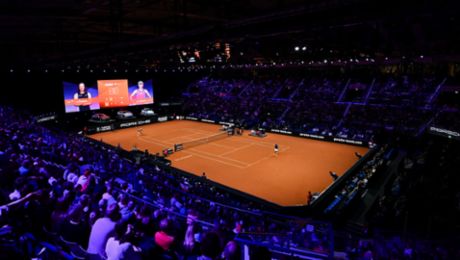“The most beautiful hall in tennis”
The move from tranquil Filderstadt to the then newly built Porsche Arena in Stuttgart’s NeckarPark complex marked the beginning of a new era for the Porsche Tennis Grand Prix in 2006. Not only visitors and players alike were much taken by the premiere in the super modern multifunctional arena. Laura Ceccarelli, as the on-site WTA supervisor, extolled: “The Porsche Arena is the most beautiful hall in tennis.”
Porsche acquired the 20-year naming rights for the arena that stands between the football stadium and the Hanns Martin Schleyer Halle. The company has thus not only avowed its allegiance to its “home town” but also wants to embrace its societal responsibility. The people in Stuttgart and the region should be offered attractive events in the Porsche Arena.
Porsche itself kicked off the action in the arena with the successful premiere of the Porsche Tennis Grand Prix which was won by the Russian Nadia Petrova. It was obvious right away that the special appeal of the multi-functional indoor arena, which was opened in May 2006 after taking only 18 months to build, lies in its flexibility to stage a whole range of events. The short changeover times make it a perfect location for both sports events and shows. Capacity varies depending on the event – from 5,200 for ice hockey matches to up to 7,200 for boxing.
As there is an enormous video screen at one end of the Centre Court, the Porsche Tennis Grand Prix has comfortable seating for 4,400 spectators.
The adjoining Hanns Martin Schleyer Halle is also used for the long-standing tournament. A second match court and a practice court are both installed there alongside the Sport & Lifestyle Village.


